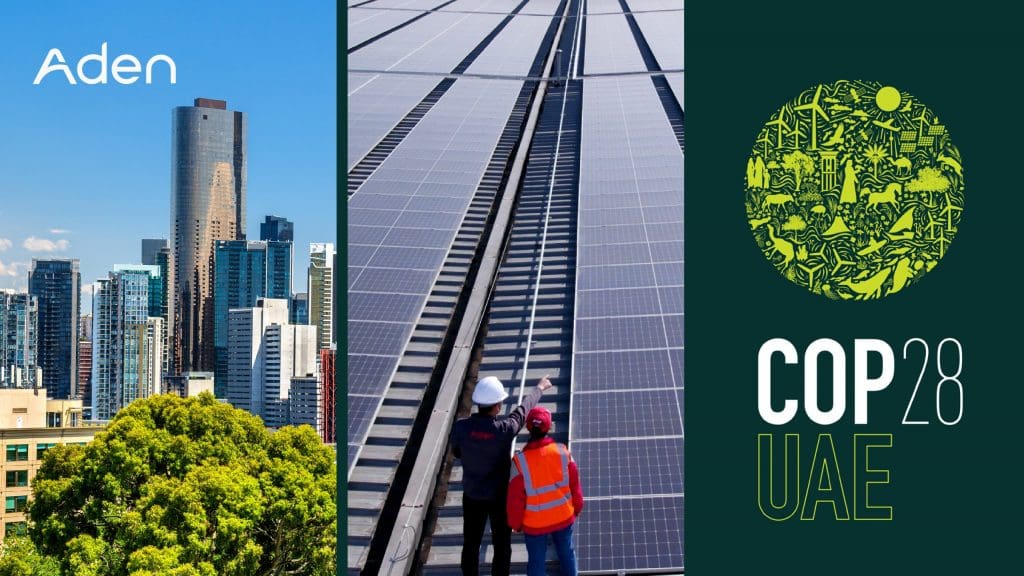This week marks the opening of the 28th annual Conference of the Parties, or COP28. This two-week UN climate forum will bring together global leaders from governments, finance, science and technology, with the aim of rallying 197 participating countries behind the UN Framework Convention on Climate Change (UNFCCC).
The overriding goal is, of course, to hold global warming to 1.5 degrees Celsius, the agreed upon framework set out in the Paris Accords of 2015. Unfortunately, based on the latest assessments from the UN, this target appears to be alarmingly off-track, with the UN estimating a 42% cut in global emissions will be required to achieve the 1.5% goal by 2030.
Despite criticisms over this gap, there is no question that COP remains a hugely impactful forum. There is simply no bigger stage for international collaboration and agenda setting, with so many top leaders in one place focusing specifically on climate change. This year, a number of key milestones will be reached, and policy agendas advanced. All of this will serve to highlight the major role that the built environment’s construction and operation plays in GHG emissions, as well as increasing the pressure on building and portfolio owners to take more active measures to decarbonize.
Top of this year’s COP agenda
Release of the first global stocktake (GST) – a five-year assessment of global progress towards the climate goals of the Paris Accords. While everyone knows that GST results will fall far short of targets, the hope is that a poor report card will spur more commitments and action from COP28.
Funds for climate adaptation & resilience – Climate change has already intensified heat, flooding and other extreme conditions. Developing countries, especially, will require support for adaption, not only in funds, but sharing and application of technologies and resources to manage intensified climactic conditions.
Energy transition & expanding the fossil fuel phase-out – past COP summits have targeted reductions in coal burning. But since COP27 last year, where 80 countries pushed to include oil and gas burning targets, there is a growing expectation that the phase out of all three fossil fuels will be worked into COP28 discussions.
Climate & the built environment – a critical connection
So far, we have not directly mentioned the role of the built environment in these talks. However, there is no question that buildings, cities, infrastructure and their energy-consuming systems will be absolutely central to any decarbonization agenda. This is because buildings are leading contributors to global emissions, contributing globally:
- 40% of global carbon emissions
- 55% of electricity consumption
- 1/3 of GHG emissions
With the global stocktake (GST) coming out, any policy changes in this area are expected to move towards higher standards from buildings and their emissions-producing infrastructure. This will only amplify a pre-existing shift requiring decarbonization of the buildings sector. This has been seen in countries with very high profiles in the world of climate change (e.g. China and the 2030/2060 targets) but also in developing economies (e.g. Indonesia, which opened its first carbon-trading scheme in October).
Climate resilience, regeneration and the next generation of buildings
One of the focuses at COP28 will be how to adapt to a world in which climate change is already creating unprecedented and far more intense conditions. This is fast becoming a central concern for building portfolio holders who are already facing an unprecedented level of liability and disruption to business operations on account of climate change.
This problem is being tackled with a range of solutions which can be applied from the earliest stage of the property lifecycle – design and engineering. Through BIM software, and application of AI and simulation technologies, buildings can be engineered not just for lower and net-zero lifetime carbon emissions, but also for a much higher level of resilience and efficiency in the face of increasingly frequent severe weather, and ongoing energy and resource pressure. A partial list of such measures includes:
- Bioclimatic Design: Naturally reducing energy needs by accounting for the local climate. This includes orientation strategies (e.g., positioning a building to maximize natural light and heat in colder climates), natural ventilation, and the use of thermal mass to regulate temperature.
- Smart Glass Technology: Windows that change thermal property and tint to control solar gain/loss and reduce the need for resource consumption.
- Green Roofs and Walls: Living systems that act as insulation, reducing heating and cooling demands. They also manage stormwater, reduce urban heat islands, and improve air quality.
- Flood-Resilient Construction: Design strategies responding to an increase in flood-prone areas, use of water-resistant and absorbent building materials, building elevation, and even structures capable of floating.
- Advanced Water Reuse: Systems that treat and reuse greywater and rainwater for non-potable uses like irrigation and flushing toilets, significantly reducing water consumption.
Fossil fuels phaseout and energy transition– renewables, storage & VPP
A final key area of attention is COP28’s likely expansion of focus from just coal to all fossil fuels including oil and gas. This is an area with obvious implications for the built environment, as buildings account for 30% of global energy consumption, even when the scope is limited to building operations.
Quite obviously, then, building energy optimization and integration of renewables will be a central venue for action and regulation, with stiffer regulation, reporting requirements and penalties for failing to hit targets to come.
Meeting the challenge of energy transition is much more complex than adding a requisite number of solar panels or turbines. In fact, portfolio managers will be called on much more to become participants in the building energy cycle, encompassing oversight, optimization and reporting on energy generation, storage and distribution, within their applicable ESG and regulatory frameworks.
For most portfolio owners, the complexity of the task, and the burden of financing and efficiently managing this is quite daunting. This is why a growing number of groups are adopting a model of energy partnership for their built assets, in which a range of energy transition needs are managed and centralized by an expert partner with the necessary experience, data software and capex investment tools.
Through energy partnership, clients are able to orchestrate and benefit from a range of energy transition solutions including:
- Energy efficiency retrofits – light and deep improvement and replacement for key technical assets and systems, which are typically the most carbon intensive utilities.
- Microgrid – investment, O&M and software tools for buildings to generate and store renewable energy onsite, creating more control of the energy mix and greater energy independence.
- Additionality funding – as carbon markets develop, and companies explore ways of deepening their contribution to decarbonization, many have begun direct investment in offsite projects which can be facilitated through the energy partner and its financial/regional networks.
- Virtual power plant – an emerging breakthrough energy technology in which software-enabled networks are created to allow decentralized power generating units such as building microgrids. The objective of a VPP is to relieve the load on the grid by smartly distributing the power generated by the individual units during periods of high electricity demand, while integrating new sustainable energy sources.
From global summits to daily operations – putting the pieces together
This is a hefty agenda, both for the leaders at COP28, and for the building portfolio owners who will be key actors in the effort to decarbonize. Certainly, it will require a hard turn from complacency and require a systemic approach to the way buildings are designed, built and operated, with digitalization as the key driver.
This is precisely the agenda Aden Group is helping its clients pursue, through our extended business ecosystem for optimization and decarbonization of portfolios. With specialized businesses in energy transition, property development and management, facilities and digital twin, Aden is ready to partner with committed businesses.









